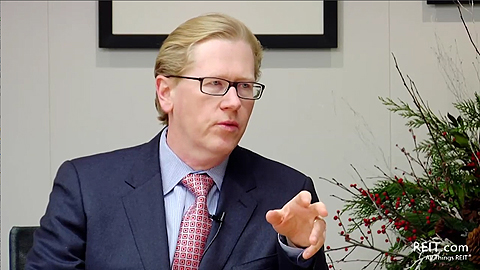 “I’m shocked, shocked to find that gambling is going on in here,” exclaims Captain Renault in the movie “Casablanca”, and we all laugh at the absurdity. In the same vein, the capital markets were shocked by the prospect of rising interest rates, as the Federal Reserve announced it was considering the wind-down of QE-infinity into merely the longest period of government-subsidized interest rates ever. Within days of the Fed’s decision, the 10-year Treasury rate rose significantly and the forward yield curve indicated 3.3 percent-plus on the 10-year by 2014, up from a 2.5 percent expectation. Does that mean that cap rates should rise by 30-plus basis points by 2014? Mostly, no.
“I’m shocked, shocked to find that gambling is going on in here,” exclaims Captain Renault in the movie “Casablanca”, and we all laugh at the absurdity. In the same vein, the capital markets were shocked by the prospect of rising interest rates, as the Federal Reserve announced it was considering the wind-down of QE-infinity into merely the longest period of government-subsidized interest rates ever. Within days of the Fed’s decision, the 10-year Treasury rate rose significantly and the forward yield curve indicated 3.3 percent-plus on the 10-year by 2014, up from a 2.5 percent expectation. Does that mean that cap rates should rise by 30-plus basis points by 2014? Mostly, no.
First, interest rates should rise because we are in a period of rising economic growth. This is exactly why the Fed announced its intent to taper—the economy was growing, with the private sector putting up about 3 percent growth, offset by a 1 percent government contraction as we paid off the Federal visa card, or at least stopped running up the balance so quickly. In such an environment, rents and occupancies should rise, mitigating some of the increase in interest rates.
Second, commercial real estate is a partial inflation hedge, which is primarily a factor on the income side, since some of inflation’s effects are alleviated by increased rents. This inflation hedge is particularly strong with apartments, but investors often forget another form of inflation hedge, the sticks and bricks. As inflation increases the costs of steel, sheetrock and glass, the intrinsic value of existing structures increases, discouraging supply, as construction is both more expensive and more costly to finance.
"A normalized interest rate environment is not going to be the end of commercial real estate’s value to investors."
Third, commercial real estate investors should bear in mind what sovereign wealth funds, pension funds, and other multi-property-type investors are always thinking about—relative value. These investors, which drive pricing on assets worldwide, are constantly assessing the relative values of stocks, bonds, real estate and commodities. Over the long run, research demonstrates that commercial real estate generally performs somewhere between stocks and bonds, and investors signaled that belief as soon as the Fed announced QE tapering. When the 10-year Treasury spiked, bonds fell the most (no inflation hedge in a bond), stocks were relatively unfazed (stocks are perceived as a fairly good inflation hedge) and REITs performed somewhere in the middle.
There will be a lag between the day I wrote this and when you read it; during that time, the market could do any number of volatile things. But in the long run, a normalized interest rate environment is not going to be the end of commercial real estate’s value to investors.